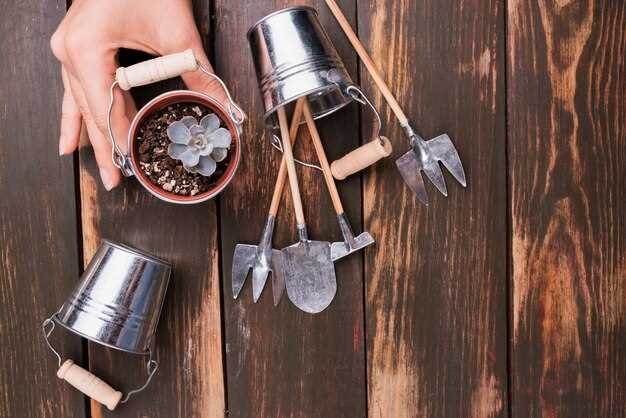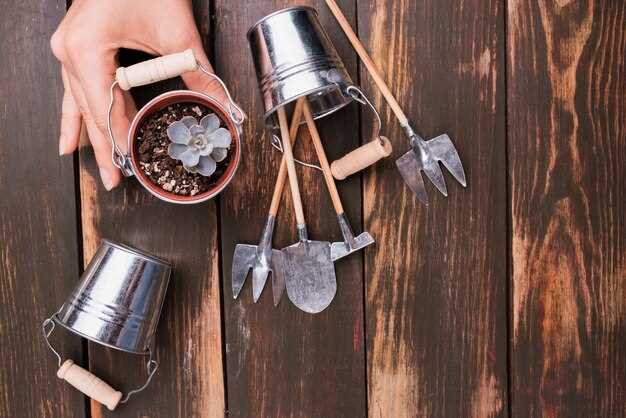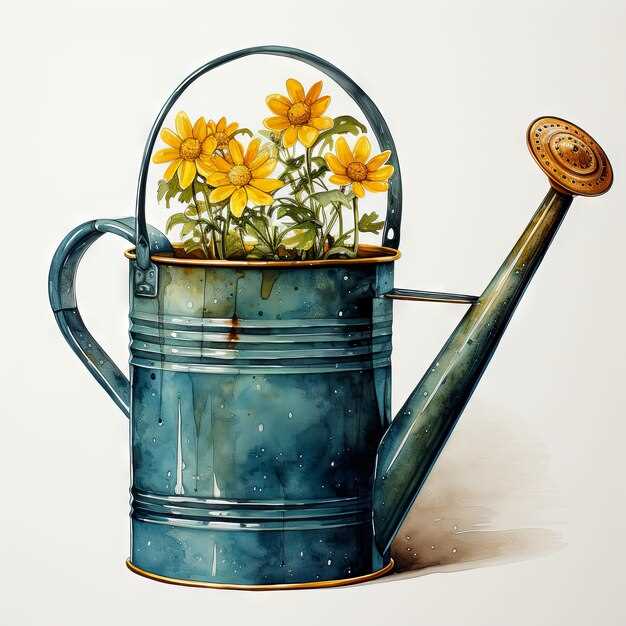

Throughout the ages, humans have sought innovative ways to nurture and cultivate the natural world around them. From the earliest civilizations to the present day, the art of gardening has been an integral part of our existence. One essential tool that has played a crucial role in this ancient practice is the vessel used for watering plants. This article delves into the fascinating history of these watering implements, tracing their evolution and the various designs that have emerged over time.
From the dawn of civilization, humans recognized the importance of water in sustaining life. As agricultural practices developed, the need for efficient irrigation methods became evident. This led to the creation of rudimentary watering vessels, crafted from natural materials such as animal horns, shells, and hollowed-out gourds. These early prototypes laid the foundation for the evolution of more sophisticated watering tools.
As societies advanced and craftsmanship flourished, so did the designs of watering vessels. Skilled artisans began to experiment with different materials, shapes, and sizes, aiming to optimize the efficiency and ease of use. The introduction of metals, such as bronze and copper, revolutionized the construction of watering implements, offering durability and precision in watering techniques. These early metal vessels were often adorned with intricate engravings, showcasing the artistic prowess of their creators.
Ancient Watering Techniques: From Clay Pots to Bamboo Containers
In this section, we will explore the fascinating world of ancient watering techniques, tracing the evolution of irrigation methods from the use of clay pots to the utilization of bamboo containers. These ancient practices, which predate modern watering cans and garden tools, offer valuable insights into the ingenuity and resourcefulness of early civilizations in their quest to nourish and cultivate their gardens.
Long before the advent of modern irrigation systems, ancient civilizations devised innovative ways to transport and distribute water to their plants. One such technique involved the use of clay pots, which were carefully crafted to hold and release water gradually. These pots, often adorned with intricate designs and patterns, were buried in the ground near the plants, allowing water to seep through the porous clay and reach the roots. This method not only conserved water but also provided a steady supply to the plants, ensuring their survival in arid climates.
Another ancient watering technique involved the use of bamboo containers. Bamboo, with its natural durability and flexibility, proved to be an excellent material for constructing water-carrying vessels. These containers were often fashioned in the shape of long tubes or hollowed-out sections of bamboo stalks, allowing for easy transportation and controlled pouring of water. The unique properties of bamboo, such as its resistance to rot and its ability to retain water, made it a popular choice among ancient gardeners.
- Clay pots and bamboo containers were not only functional but also served as decorative elements in ancient gardens. The intricate designs and patterns found on these vessels showcased the artistic skills and cultural aesthetics of the civilizations that used them.
- While clay pots and bamboo containers were widely used in various parts of the world, different regions developed their own unique watering techniques. For example, in ancient Egypt, the use of clay pots was combined with a system of canals and channels to efficiently distribute water throughout the agricultural fields.
- As civilizations advanced, so did their watering techniques. The invention of aqueducts and irrigation systems revolutionized the way water was transported and utilized in gardens. However, the ancient techniques of using clay pots and bamboo containers laid the foundation for these advancements and continue to inspire modern gardening practices.
Exploring the ancient watering techniques of clay pots and bamboo containers not only provides us with a historical perspective on garden tools but also highlights the resourcefulness and innovation of early civilizations. These methods remind us of the importance of sustainable and efficient irrigation practices in nurturing and maintaining our gardens.
Renaissance Innovations: The Birth of Decorative Watering Cans
In the era of rebirth and artistic exploration, the Renaissance period witnessed a remarkable transformation in the world of gardening tools. During this time, craftsmen and artisans sought to infuse beauty and elegance into everyday objects, including the humble watering can. This section explores the emergence of decorative watering cans during the Renaissance, highlighting the innovative designs and intricate details that adorned these functional garden tools.
|
One of the key characteristics of Renaissance decorative watering cans was their ornate and elaborate appearance. Craftsmen drew inspiration from classical motifs, such as floral patterns, mythological figures, and architectural elements, to create visually stunning designs. These intricate details were often handcrafted using techniques like embossing, engraving, and filigree work, showcasing the skill and artistry of the craftsmen. |
Another notable innovation during this period was the use of different materials for crafting watering cans. While traditional cans were primarily made of utilitarian materials like metal or clay, Renaissance artisans experimented with luxurious materials such as silver, brass, and even porcelain. These materials not only added to the aesthetic appeal of the watering cans but also reflected the wealth and status of the garden owners. |
|
Furthermore, the Renaissance period saw the introduction of functional enhancements in watering can designs. Artisans incorporated features like elongated spouts, adjustable nozzles, and ergonomic handles to improve the efficiency and ease of use. These innovations not only made watering cans more practical but also showcased the ingenuity and inventiveness of the craftsmen. |
The popularity of decorative watering cans during the Renaissance extended beyond their functionality. These exquisite garden tools became symbols of wealth, refinement, and artistic appreciation. They were often displayed as decorative objects in gardens and courtyards, adding a touch of elegance to the outdoor spaces. The intricate designs and craftsmanship of these watering cans also served as a testament to the artistic achievements of the Renaissance period. |
In conclusion, the Renaissance period marked a significant turning point in the evolution of watering cans, as they transitioned from simple and utilitarian objects to decorative works of art. The innovative designs, luxurious materials, and functional enhancements of Renaissance decorative watering cans continue to inspire and captivate garden enthusiasts and collectors alike.
Industrial Revolution: Metal Watering Cans and Mass Production
During the period of the Industrial Revolution, significant advancements were made in the manufacturing of garden tools. This era witnessed the emergence of metal watering cans and the introduction of mass production techniques, revolutionizing the gardening industry.
Prior to the Industrial Revolution, watering cans were primarily made from materials such as wood or clay. However, with the advent of new technologies and the availability of metal, the production of watering cans underwent a remarkable transformation. Metal watering cans offered numerous advantages over their traditional counterparts, including increased durability, improved water flow control, and enhanced efficiency in watering plants.
The introduction of mass production techniques during the Industrial Revolution further accelerated the production of metal watering cans. With the implementation of assembly lines and specialized machinery, manufacturers were able to produce watering cans in large quantities at a significantly lower cost. This not only made metal watering cans more accessible to a wider range of gardeners but also contributed to the overall growth of the gardening industry.
| Advantages of Metal Watering Cans |
|---|
| 1. Durability |
| 2. Improved water flow control |
| 3. Enhanced efficiency in watering plants |
The mass production of metal watering cans during the Industrial Revolution not only transformed the way gardens were watered but also played a significant role in shaping the overall design and functionality of garden tools. The availability of metal as a material allowed for innovative designs and improvements in the construction of watering cans, leading to more efficient and user-friendly tools for gardeners.
Overall, the Industrial Revolution marked a turning point in the history of watering cans, introducing metal as a preferred material and revolutionizing the production process. The advancements made during this era laid the foundation for the modern watering cans we use today, showcasing the impact of industrialization on garden tools and the continuous evolution of design and functionality.
Victorian Era Elegance: Ornate Designs and Floral Motifs
In the era of Queen Victoria, a period known for its opulence and refinement, garden tools were not exempt from the prevailing aesthetic. This section explores the exquisite designs and intricate floral motifs that adorned watering cans and other garden implements during the Victorian era.
The Victorian era was characterized by a fascination with intricate details and a love for nature. These sensibilities were reflected in the design of garden tools, which were transformed into objects of beauty and elegance. Ornate patterns, often featuring delicate scrollwork and intricate floral motifs, adorned watering cans, making them not only functional but also visually stunning.
The use of floral motifs was particularly prevalent during this time. Flowers such as roses, daisies, and lilies were commonly depicted, symbolizing the beauty and abundance of nature. These motifs were often intricately carved or painted onto the surface of the watering cans, creating a sense of artistry and craftsmanship.
Furthermore, the Victorian era saw the rise of decorative techniques such as embossing and gilding. These techniques were employed to enhance the ornate designs of watering cans, adding a touch of luxury and grandeur. Gold and silver accents were often used to highlight the intricate details, creating a sense of richness and opulence.
In conclusion, the Victorian era brought about a transformation in the design of garden tools, including watering cans. The emphasis on ornate designs and floral motifs, coupled with the use of decorative techniques, resulted in watering cans that were not only practical but also exquisite works of art. The elegance and beauty of these Victorian-era watering cans continue to inspire garden enthusiasts and collectors alike.
Modern Functionality: Ergonomic Designs and Efficient Watering Systems
In the realm of contemporary gardening tools, there exists a realm of innovation that goes beyond the conventional notions of watering cans. This section explores the cutting-edge advancements in ergonomic designs and efficient watering systems, revolutionizing the way we nurture our plants and gardens.
With a focus on user comfort and ease of use, modern ergonomic designs have transformed the traditional watering can into a tool that seamlessly integrates with the human hand. These designs prioritize the natural movement of the wrist and arm, reducing strain and fatigue during prolonged use. The incorporation of lightweight materials and adjustable handles further enhances the ergonomic experience, allowing gardeners to water their plants with precision and minimal effort.
Efficiency is another key aspect of modern watering systems. Through the integration of advanced technologies, such as drip irrigation and automatic timers, gardeners can optimize water usage and minimize waste. These systems ensure that plants receive the right amount of water at the right time, promoting healthy growth while conserving resources. Additionally, the use of efficient watering techniques, such as targeted watering and mulching, further enhances water conservation efforts.
Furthermore, modern functionality extends beyond the physical design of watering tools. The incorporation of smart features, such as moisture sensors and smartphone connectivity, allows gardeners to monitor and control watering systems remotely. This level of automation and customization ensures that plants receive optimal care, even when gardeners are away.
In conclusion, the evolution of watering tools has brought forth a new era of functionality, where ergonomic designs and efficient watering systems work in harmony to enhance the gardening experience. By prioritizing user comfort and resource conservation, these advancements empower gardeners to nurture their plants with precision and efficiency, ultimately leading to thriving gardens and a greener future.
Contemporary Trends: Sustainable Materials and Innovative Features
In the realm of garden tools, there is a growing movement towards incorporating sustainable materials and innovative features. This trend reflects a shift in consumer preferences towards eco-friendly and efficient gardening practices. Manufacturers are now exploring new materials and designs that not only reduce environmental impact but also enhance the functionality and usability of garden tools.
1. Sustainable Materials
One of the key aspects of contemporary garden tool design is the use of sustainable materials. Traditional materials like plastic and metal are being replaced with eco-friendly alternatives such as bamboo, recycled plastic, and biodegradable materials. These materials not only reduce the carbon footprint but also offer durability and longevity, ensuring that the tools can withstand the test of time.
2. Innovative Features

Another significant aspect of modern garden tools is the incorporation of innovative features. Manufacturers are constantly exploring new technologies and designs to make gardening tasks more efficient and enjoyable. For example, some watering cans now come with built-in filters to remove impurities from water, while others have adjustable nozzles for different watering patterns. Additionally, ergonomic handles and lightweight designs are being introduced to reduce strain and fatigue during use.
- Intuitive designs that make it easier for users to control water flow and target specific areas.
- Smart features like sensors that monitor soil moisture levels and automatically adjust watering schedules.
- Modular designs that allow for easy customization and attachment of additional accessories.
- Collapsible or stackable designs for convenient storage and transportation.
These innovative features not only enhance the functionality of garden tools but also contribute to a more sustainable and efficient gardening experience.





